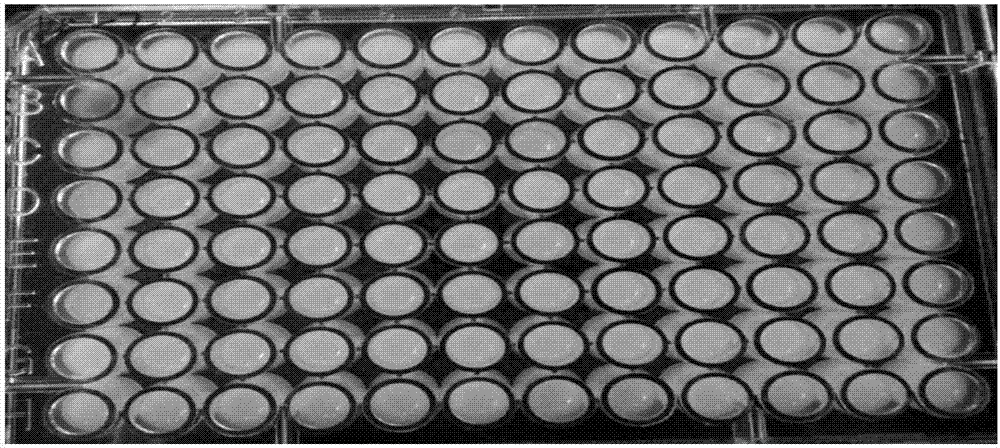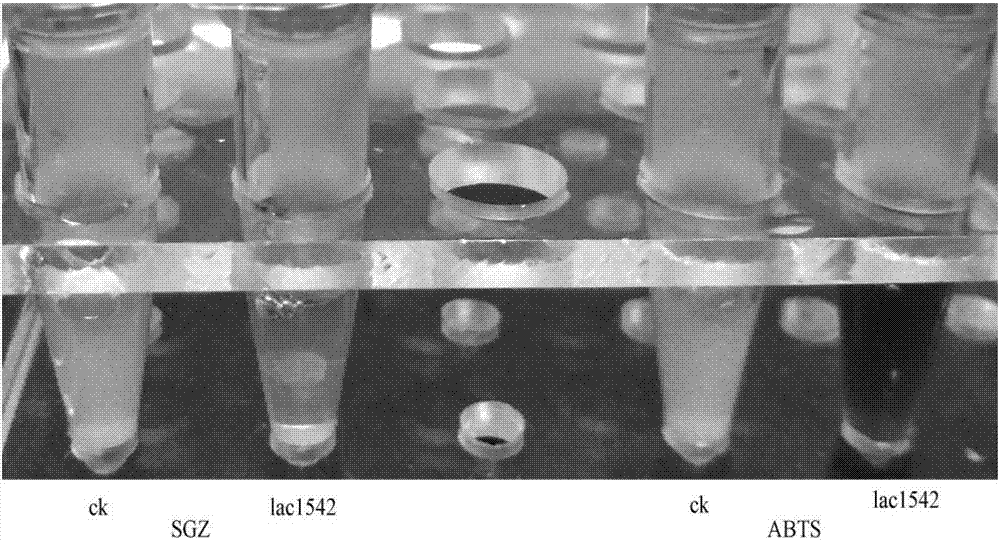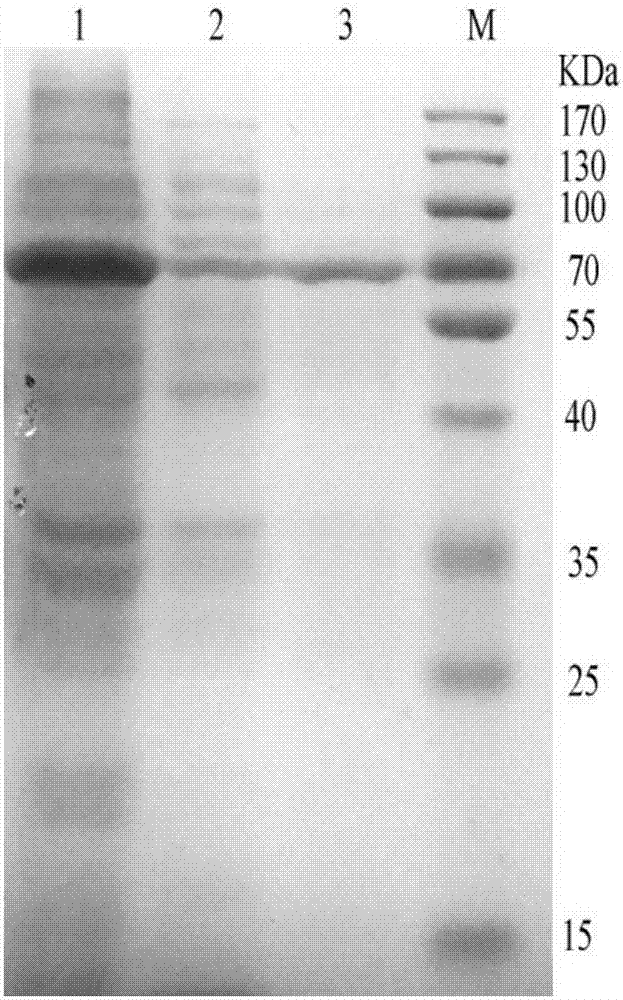Ultra-Mn2<+>-resistant bacterial laccase, recombinant vector, recombinant bacteria, enzymic preparation, compound enzyme system and preparation method and application thereof
A recombinant vector, recombinant bacteria technology, applied in the biological field, can solve the problems of reduced enzyme activity, low yield, remaining 20%, etc.
- Summary
- Abstract
- Description
- Claims
- Application Information
AI Technical Summary
Problems solved by technology
Method used
Image
Examples
Embodiment 1
[0070] The acquisition of bacterial laccase gene in the present embodiment comprises the following steps:
[0071] (1) Acquisition of metagenomic DNA in soil samples: The samples were collected from the sewage outfall sludge of a paper mill in Xuchang City, Henan Province. Add DNAextraction buffer 18mL (containing 100mM EDTA, 100mM sodium phosphate, 1.5M NaCl, 1% CTAB and 100mM Tris-Hcl, pH 8.0), vortex to mix, shake at 220rpm, 37℃ for 30min, then add 2mL to each tube 20% SDS to make the final concentration 2% (w / v). Then put it in a water bath at 65°C for 2 hours, and gently invert it up and down several times every 15 minutes to mix well. Centrifuge at 6,000g at room temperature for 10min. After collecting the supernatant, transfer it to a clean centrifuge tube, add an equal volume of chloroform:isoamyl alcohol (24:1, V / V), and gently invert up and down to mix. Then centrifuge at 11,000g for 20min at 4°C to collect the supernatant, add 0.6 times the volume of isopropanol a...
Embodiment 2
[0080] The acquisition of bacterial laccase recombinant vector in the present embodiment comprises the following steps:
[0081] 1. The positive clones obtained in Example 1 were inoculated in 5 mL of LB medium (100 μg / mL Amp), cultured overnight at 37° C. on a shaker at 220 rpm, and plasmids were extracted.
[0082] 2. Design primers LacF and LacR, respectively introduce EcoR I and Hind III restriction sites that can be inserted into the Escherichia coli expression vector pet28a at both ends of the primers, and remove the stop codon.
[0083] The nucleotide sequence of primer LacF (upstream primer) is shown in SEQ ID NO.3;
[0084] The nucleotide sequence of the primer LacR (downstream primer) is shown in SEQ ID NO.4.
[0085] 3. Using the extracted plasmid as a template, use primers LacF and LacR for PCR amplification: the total volume of the PCR system is 30 μL, including 15 μL of Taq mix (Tiangen Company), 1 μL of each of the two primers (10 μM), 12 μL of sterilized disti...
Embodiment 3
[0088]The acquisition of recombinant bacteria in this example includes: transforming the host bacteria Escherichia coli BL21 (DE3) with the recombinant vector obtained in Example 2, coating the LB medium plate containing 100 μg / mL kanamycin (Kam) with the transformation solution, 37 Cultivate overnight at ℃, extract positive colony plasmids, and use primers LacF and LacR for PCR identification. The correct recombinant bacteria obtained contain the above-mentioned bacterial laccase gene.
PUM
| Property | Measurement | Unit |
|---|---|---|
| molecular weight | aaaaa | aaaaa |
| decolorization rate | aaaaa | aaaaa |
Abstract
Description
Claims
Application Information
 Login to View More
Login to View More - R&D
- Intellectual Property
- Life Sciences
- Materials
- Tech Scout
- Unparalleled Data Quality
- Higher Quality Content
- 60% Fewer Hallucinations
Browse by: Latest US Patents, China's latest patents, Technical Efficacy Thesaurus, Application Domain, Technology Topic, Popular Technical Reports.
© 2025 PatSnap. All rights reserved.Legal|Privacy policy|Modern Slavery Act Transparency Statement|Sitemap|About US| Contact US: help@patsnap.com



